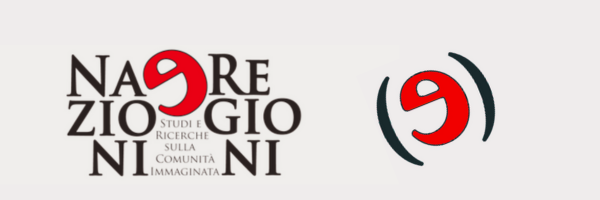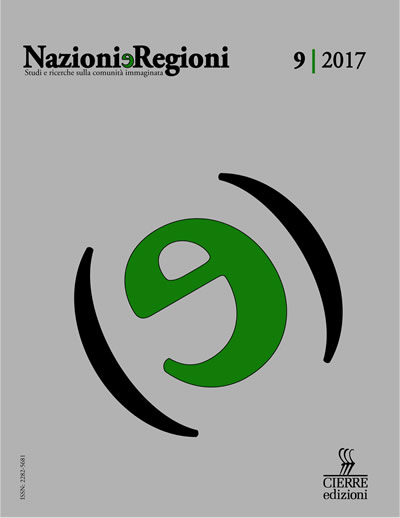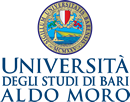Etnicità e multilinguismo: Verso una comprensione dei processi identitari nel Camerun precoloniale
DOI:
https://doi.org/10.15162/2282-5681/1459Riferimenti bibliografici
Aronin L. – Fishman J. A. – Singleton D. – Ó Laoire M. (2013), «Current Multilingualism: A New Linguistic Dispensation», in Singleton D. – Fishman J. A. – Aronin L. – Ó Laoire M. (eds.), Current Multilingualism: A New Linguistic Dispensation, Mouton De Gruyter, Boston-Berlin, pp. 1-23.
Atkinson R. R. (1999), «The (Re)Construction of Ethnicity in Africa: Extending the Chronology, Conceptualisation and Discourse», in Yeros P. (ed.) Ethnicity and Nationalism in Africa. Constructivist Reflections and Contemporary Politics, Palgrave, New York, pp. 15-44.
Bayart J.-F. (1993), The State in Africa. The Politics of the Belly. Longman, London-New York.
Braudel F. (1958), «Histoire et Science Sociale: La Longue Durée», Annales E.S.C., n. 13, vol. 4, pp. 725-753.
Brubaker R. – Cooper F. (2000), «Beyond ‘Identity’». Theory and Society, n. 29, vol. 1, pp. 1-47.
Cobbinah A. – Hantgan A. – Lüpke F. – Watson R. (2016), «Carrefour des langues, carrefour des paradigmes», in Auzanneau M. – Bento M. – Leclère M. (eds.) Espaces, mobilités et éducation plurilingues: Éclairages d’Afrique ou d’ailleurs, Édition des Archives Contemporaines, Paris, pp. 79-97.
Comaroff J. L. – Comaroff J. (2009), Ethnicity, Inc., University of Chicago Press, Chicago.
David N. – Kramer C. (2001), Ethnoarchaeology in Action, Cambridge University Press, Cambridge.
Di Carlo P. (2011) «Lower Fungom Linguistic Diversity and Its Historical Development: Proposals from a Multidisciplinary Perspective», Africana Linguistica, n. 17, pp. 53-100.
Di Carlo P. (2015), «Multilingualism, Solidarity, and Magic: New Perspectives on Language Ideologies in the Cameroonian Grassfields», in Casini S. – Bruno C. – Gallina F. – Siebetcheu R. (a cura di) Atti del XLVI Congresso Internazionale della Società di Linguistica Italiana - Siena 27-29 settembre 2012, Bulzoni, Roma, pp. 290-304.
Di Carlo P. (2016), «Multilingualism, Affiliation, and Spiritual Insecurity. From Phenomena to Processes in Language Documentation», in Seyfeddinipur M. (ed.), African Language Documentation: New Data, Methods and Approaches, Language Documentation and Conservation Special Volume 10, pp. 71-104, <http://hdl.handle.net/10125/24649>.
Di Carlo P. – Good J. (2014), «What Are We Trying to Preserve? Diversity, Change, and Ideology at the Edge of the Cameroonian Grassfields», in Austin P. K. – Sallabank J. (eds.), Endangered Languages: Beliefs and Ideologies in Language Documentation and Revitalization, Oxford University Press, Oxford, pp. 231-264.
Di Carlo P. (2017), «Towards an Understanding of African Endogenous Multilingualism», International Journal of the Sociology of Language Special Volume «Globalising Sociolinguistics» edited by Patrick Heinrich and Dick Smakman (in corso di stampa).
Di Carlo P. – Good J. – Ojong R. A. (2017) «Multilingualism in rural Africa», in Aronoff M. (ed.) Oxford Research Encyclopedia of Linguistics (in corso di stampa).
Esene Agwara A. D. (2013), «Rural Multilingualism in the North West Region of Cameroon: The Case of Lower Fungom», Tesi di Master in Linguistica Applicata, University of Buea.
Eyoh D. (1998) «Conflicting Narratives of Anglophone Protest and the Politics of Identity in Cameroon», Journal of Contemporary African Studies, n. 16, vol. 2, pp. 249-276.
Fardon R. – Furniss G. (1994), «Introduction», in Fardon R. – Furniss G. (eds.) African Languages, Development, and the State, Routledge, London and New York, pp. 1-29.
Fowler I. (2011), «Kingdoms of the Cameroon Grassfields», Reviews in Anthropology, n. 40, vol. 4, pp. 292-311.
Fowler I. – Zeitlyn D. (1996), «Introduction: The Grassfields and the Tikar», in Fowler I. – Zeitlyn D. (eds.), African Crossroads: Intersections between History and Anthropology in Cameroon, Berghahn Books, Providence, pp. 1-16.
François A. (2012), «The Dynamics of Linguistic Diversity: Egalitarian Multilingualism and Power Imbalance among Northern Vanuatu Languages», International Journal of the Sociology of Language, n. 214 , pp. 85-110.
Giddens A. (1984), The Constitution of Society. An Outline of the Theory of Structuration. Polity Press, Cambridge.
Good J. – Lovegren J. – Mve J. P. – Nganguep Tchiemouo C. – Voll R. – Di Carlo P. (2011), «The Languages of the Lower Fungom Region of Cameroon: Grammatical Overview», Africana Linguistica n. 17, pp. 101-64.
Hombert J.-M. (1980), «Noun Classes of the Beboid Languages», in Hyman L. M. (ed.), Noun Classes in the Grassfields Bantu Borderland, University of Southern California Department of Linguistics, Los Angeles, pp. 83-98.
Horowitz D. L. (2000), Ethnic Groups in Conflict. Ethnic Groups in Conflict, University of California Press, Berkeley.
Horton R. (1972), «Stateless Societies in the History of West Africa», in Ajayi J. F. A. – Crowder M. (eds.) History of West Africa Vol. 1, Columbia University Press, New York, pp. 78-119.
Hylland Eriksen T. (2001), «Ethnic Identity, National Identity, and Intergroup Conflict», in Ashmore R. D. – Jussim L. – Wilder D. (eds.), Social Identity, Intergroup Conflict, and Conflict Reduction, Oxford University Press, Oxford, pp. 42-68.
Irvine J. T. (1989), «When Talk Isn’t Cheap: Language and Political Economy». American Ethnologist, n. 16, vol. 2, pp. 248-267.
Kopytoff I. (1987), «The Internal African Frontier: The Making of African Political Culture», in Kopytoff I. (ed.), The African Frontier. The Reproduction of Traditional African Societies, Indiana University Press, Bloomington, pp. 3-84.
Lüpke F. (2010), «Language and Identity in Flux: In Search of Baïnounk», Journal of Language Contact THEMA, n. 3, pp. 155-74.
Lüpke F. – Storch A. (2013), Repertoires and Choices in African Languages. Mouton de Gruyter, Berlin-Boston.
Muller J.-C. (1998), Jeux de miroirs. Structure politiques du Haut Plateau Nigérian, Editions de l’Ecole des Hautes Etudes en Sciences Sociales, Paris.
Ojong R. A. (2017). A Micro-Study of Sociolinguistic Dynamics in a Multilingual Setting: The Case of Lower Fungom. Tesi di dottorato, University of Buea, Cameroon.
Ranger T. (1983), «The Invention of Tradition in Colonial Africa», in Hobsbawm E. J. – Ranger T. (eds.) The Invention of Tradition: Cambridge University Press, Cambridge, pp. 211-262.
Ranger T. (1999), «Concluding Comments», in Yeros P. (ed.), Ethnicity and Nationalism in Africa. Constructivist Reflections and Contemporary Politics, Palgrave, New York, pp. 133-144.
Slotta J. (2012), «Dialect, Trope, and Enregisterment in a Melanesian Speech Community», Language & Communication, n. 32, pp. 1-13.
Tosco M. (1998), «'People Who Are Not the Language They Speak': On Language Shift without Language Decay in East Africa», in Brenzinger M. (ed.), Endangered Languages in Africa, Rüdiger Köppe, Köln, pp. 119-142.
Warnier J.-P. (1979), «Noun-Classes, Lexical Stocks, Multilingualism, and the History of the Cameroon Grassfields», Language in Society, n. 8, vol. 3, pp. 409-23.
Werbner R. (1996), «Multiple Identities, Plural Arenas», in Werbner R. – Ranger T. (eds.), Postcolonial Identities in Africa, Zed Books, Atlantic Highlands NJ, pp. 1-26.
Downloads
Pubblicato
Fascicolo
Sezione
Licenza
Nazioni e regioni è una rivista open access che applica la licenza Creative Commons CC BY-NC-ND 4.0 a tutti i contenuti pubblicati.
Nazioni e regioni is an open-access journal that applies the Creative Commons CC BY-NC-ND 4.0 licence to all published contents.







